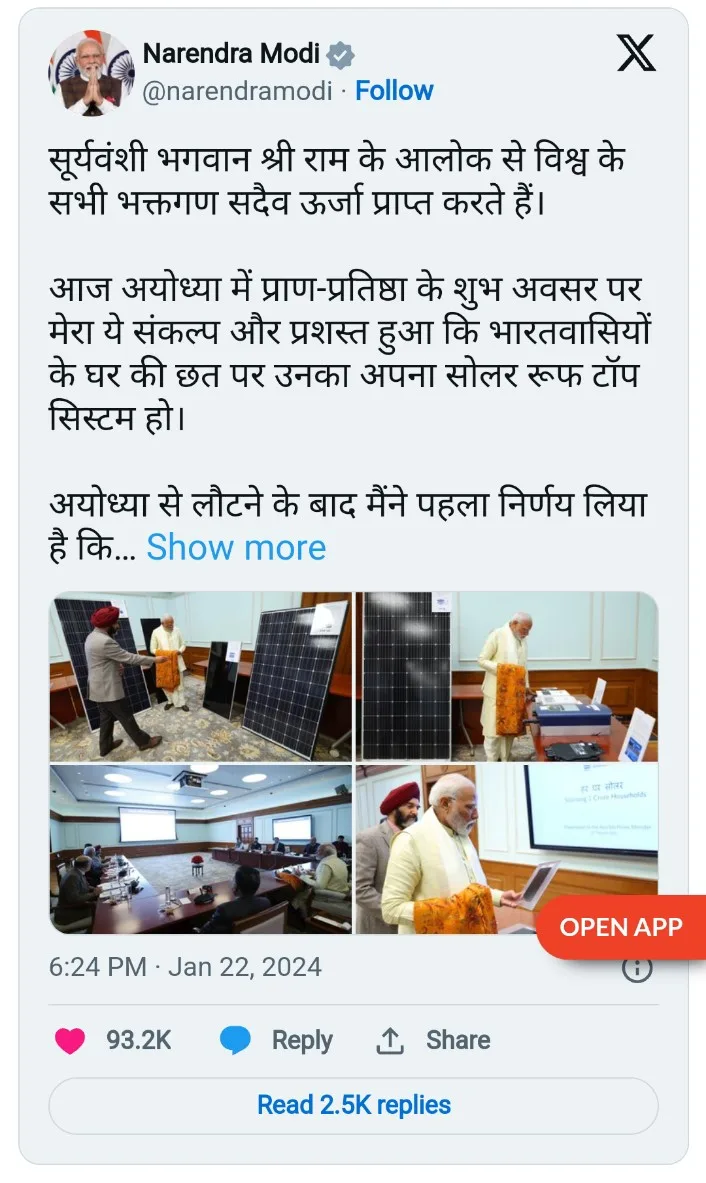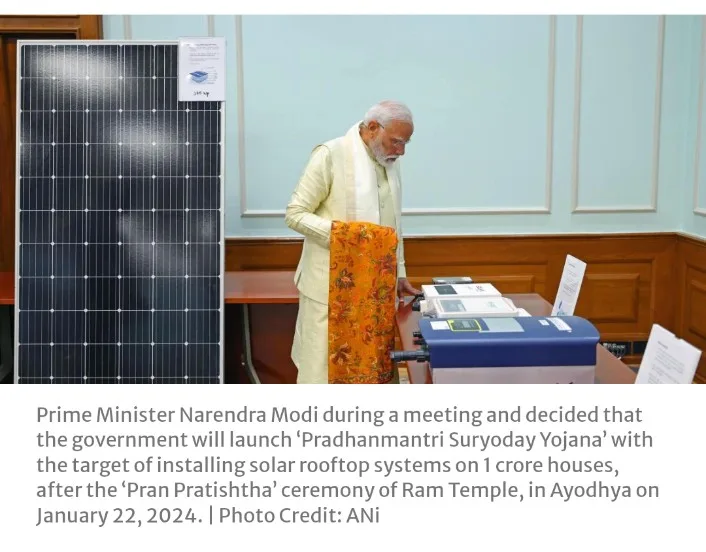Hours after the consecration of the Ram Lalla idol in Ayodhya, Prime Minister Narendra Modi, citing divine inspiration, announced a scheme to electrify one crore households with solar panels.
“Today, on the auspicious occasion of the consecration in Ayodhya, my conviction has been further strengthened that the people of India should have their own solar roof-top system on the roof of their houses.
The first decision I have taken after returning from Ayodhya is that our government will launch ‘Pradhanmantri Suryodaya Yojana’ with the aim of installing rooftop solar on one crore houses. This will not only reduce the electricity bill of the poor and middle class, but will also make India self-reliant in the field of energy,” Mr. Modi tweeted from his personal account.
No timeframe for such installations was given.
Joining the tweet were photographs of Mr. Modi convening a meeting with officials, including those from the Ministry of New and Renewable Energy. These included the department’s Minister, R.K. Singh, and Secretary, Bhupinder Bhalla.
Currently, there is no centrally collected data of the number of households in India with rooftop solar installations. despite increases in installed solar capacity, the growth in the number of rooftop solar installations has been limited.
Till July 31, 2023, only 2.2 GW (1 GW is 1,000 MW) capacity of rooftop installations were reportedly installed in Indian homes, according to information given to the Lok Sabha.
The government, since 2010, has been claiming to install 100 GW by 2022 — 60 GW from utility project (mega centralised solar parks) and 40 GW from rooftop solar.
So far, about 56 GW has been setup in the utilities (July 2023) and 12 GW in rooftops.
Rooftop solar installations include panels in offices and homes. Approximately 12 GW of rooftop solar installations as of July 2023, about 87% are “non-residential”, according to a report by JMK Research.
The varied sizes of home-installations, which start anywhere from 1 kw, make estimates of the number of households hard to compute. “100 crore households is a huge target to achieve.
India has consistently added about 2 GW annually (rooftop) but most of these are in offices and buildings. Currently, the incentive structures are such that it benefits commercial entities more than individual houses (to install solar panels),” experts said.






